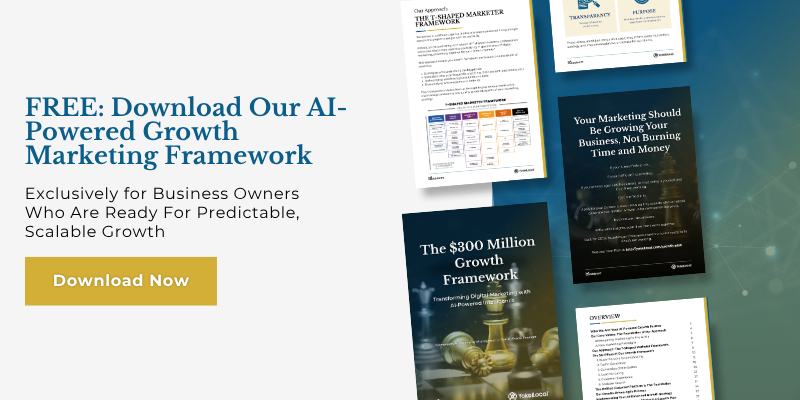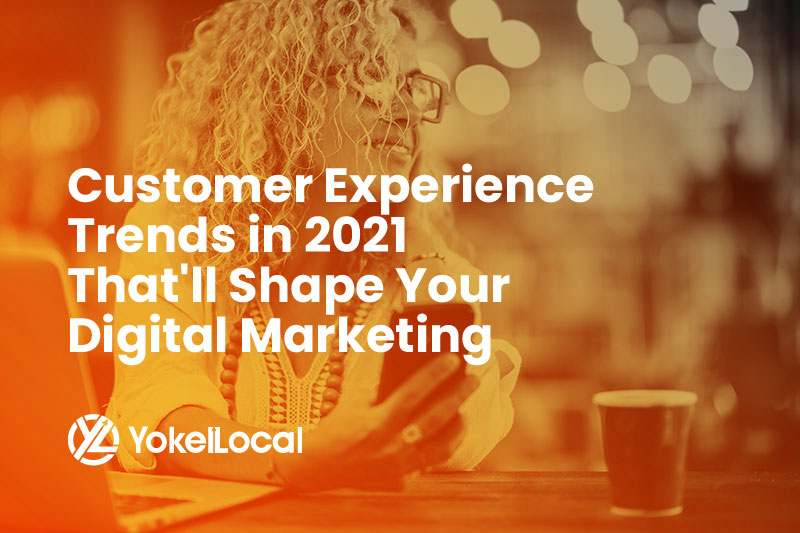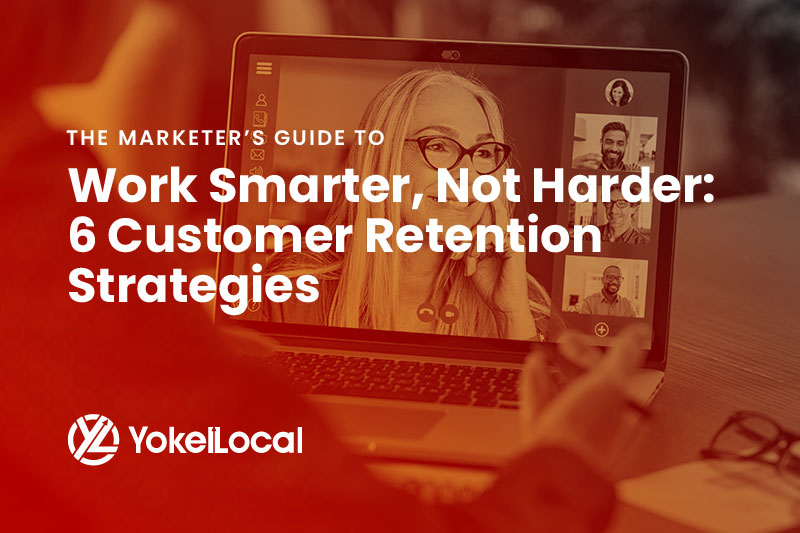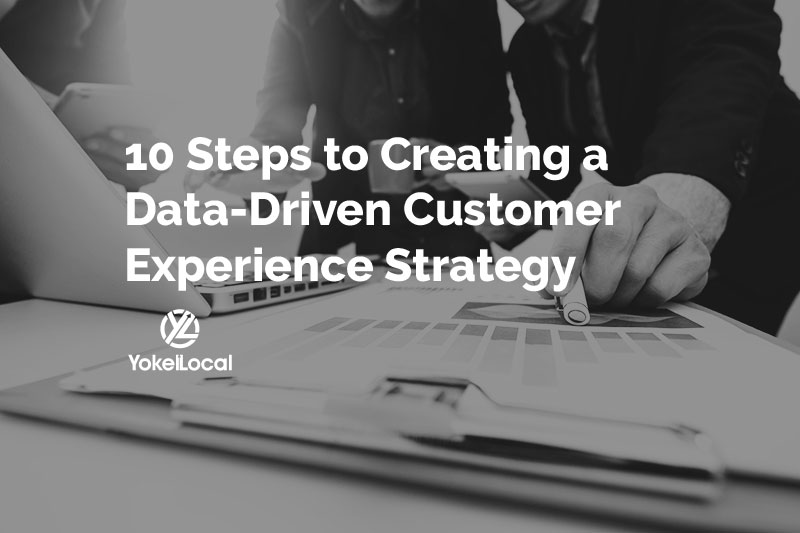According to Walker Info, by 2020, 86% of customers will rate customer experience as the most important factor they will consider when making a purchase.
Customer experience is defined as a customer’s interaction with a brand or business at all of the different touchpoints. Touchpoints are any way a person can engage with your company and brand, including (but not limited to) websites, online ads, commercials, social media, mail, email, talking on the phone with your support, visiting your store, buying a product and using the product.
Before consumers think about your product or its price, they will think about the experience your company offers them. Even if you offer a great product at a great price, a bad experience will deter people from becoming your customers. This makes it more important than ever to create a data-driven customer experience that adapts to your customers’ changing preferences.
With the right data, you can refine your company’s customer experience, user experience, and data and analytics to improve your bottom line.
3 Key Pillars of a Data-Driven Customer Experience
A data-driven customer experience relies on people, data, and a process by which to analyze actionable goals from the available information.
- People: Your company will only be as strong as well as you know your customers. Today’s information technologies allow companies to obtain a 360° view of them. Your organization can learn about their demographics, buying preferences, digital habits and more. You can then leverage this information to personalize your customer experience for every customer.
- Data: Data is only useful to your company if you know how to organize it, contextualize it, and derive information from it. A data management platform can help you make sense of the data you receive from customers by building a profile of each one. It can organize your data and show you which parts of your customer experience are the most important.
- Process: Once you have a data profile of your customers, you can then begin to modify your customer experience. Each touch point is an opportunity to delight a customer, and you have the information you need to build a frictionless experience.
How Organizations are Applying Data to Shape Customer Experience
Data and analytics are changing the way businesses approach the consumer experience, allowing them to create one that is more dynamic, responsive, and personalized.
- Personalization: You can now use data to craft an entire customer experience that is based on an individual customer’s needs and desires. You can create content that will delight them, and programmatic advertising that will expose them to the products or services you offer will interest them most. You’ll also have a much better idea of how to market to those to each customer.
- See What’s Working and What’s Not: An endless stream of data presents endless opportunities to refine your marketing efforts. It can help you evaluate which methods generate more engagement with your business. Data can present you with metrics that you can use to measure the success of even the smallest changes you make to marketing efforts, increasing ROI while reducing the cost of acquisition per customer.
- Connect Customer Touchpoints: More data gives you a better view of how your customers are behaving at every stage of the buyer’s journey. You can evaluate the effectiveness of your calls-to-action, content offers, and e-mails, then tailor them to the needs of individual consumers. You can also find out if the ways customers interact with your business, such as by using your app or mobile site.
- Deliver Real-Time Experiences: Real-time information can help you make recommendations to customers or offer advice during their purchase. It can also help you optimize your advertising, preventing you from showing a customer an ad for a product they just purchased, for example. In turn, this can increase sales while also creating a memorable experience your customers can tell others about.
- Build Frictionless Experiences: Customers are more discriminating than ever, and they can easily choose one of your competitors when purchasing any given product or service. They don’t want to wait extra time when shopping on your website because your pages load too slowly or because it doesn’t save their information when they go to shop with you. The easier you make it for customers to do business with you, the more likely they will be to return later on.
- Micro-segmentation: After gathering enough data, you can identify customers that have the highest lifetime value (LTV). Once you do this, you can then tailor your customer service experience to the needs and expectations of each one. Data can also help you find the customers who are your biggest social media influencers, allowing you to craft a customer experience they’ll rave about to millions of followers.
Using Data to Create Better Customer Experiences
A data-driven customer experience strategy is one that is continuously refined by data that you collect at every touch point your company has with a customer. Here are a few tips to keep in mind when using your marketing technology stack to build a better experience for your customers.
1. Select & Capture the Right Data
An effective marketing strategy will depend on how well you can identify useful data about your customers, capture it, and prioritize it. Every touch point with your company and a customer can yield insights into their behavior. Once you start gathering enough data, you can discover statistically significant relationships between different behavior patterns which you can use as focal points for your marketing efforts.
2. Take a Holistic Approach to Data Analysis
Data is vital to creating a better customer experience, but the way you analyze data will ultimately determine its usefulness to you. It’s important to understand the life cycle of your own data in order to derive the correct conclusions from it. If you don’t, you could easily be led astray by false trends or by biases which exist in your own gathering methods. However, with a holistic understanding of your data, you can use it to identify areas of improvement.
3. Be Agile
Tastes, technologies and trends are constantly shifting and changing, which means the way your customers find out about your business could change, too. Data can allow you to keep track of trends so that you can shift your advertising to where they are most likely to see it. If you don’t do this, you could lose customers and could even begin to fall behind your more agile competitors.
4. Predict Customers Wants and Need (but Don't Assume)
Instead of assuming what your customers want, build a profile of them that is based on their actions. With enough data, you can begin to predict the behavior of your customers. You can suggest to them products they have previously purchased or ones they may like based on associated purchases.
5. Meet Customers Where They Are
With the right data, you could market to customers where they are most likely to see you, be it on a particular social media platform or on a website many of them read. The data you collect can also help you optimize your messaging for each of the personas that frequent the different channels.
6. Communicate Your Unique Selling Point
To stand out from your competitors, you must identify and emphasize the unique selling point (USP) for your business. With the vast amount of data available to you, you can now identify your USP for each individual customer and the best way to market it to them.
7. Map the Buyer’s Journey
You can better map the buyer’s journey for each of your buyer personas with more data. You can then use this to refine their experience at every stage, making it easier for them to connect with you and for you to connect with them.
8. Don’t Sacrifice Performance
Your company needs data to refine its customer experience, but your collection methods should never degrade that experience. Your customers should never be inconvenienced by your data collection efforts.
9. Use Every Platform
Collect data from your customers from whatever device they use, whether it’s a smartphone, tablet, laptop, or desktop. Their behaviors may differ between platforms, allowing you to further refine your customer experience.
10. Refine Your Strategies
You will have to continually evaluate and refine your marketing strategies based on new data you gather about customers and the results of each of your marketing efforts. The right data can help you to adapt to new trends and to the changing tastes and behaviors of your customer base.
Data is changing the ways customers and business interact with one another, but you can leverage it to not only improve your customer experience but your business as a whole. By creating a better customer experience, you could make your organization as a whole leaner, smarter and faster, and better able to adapt and to survive in a changing environment.














